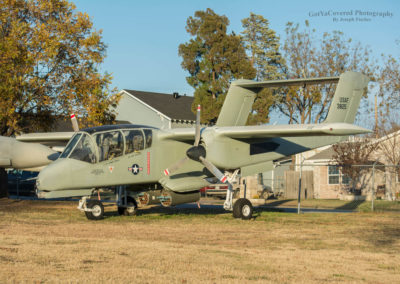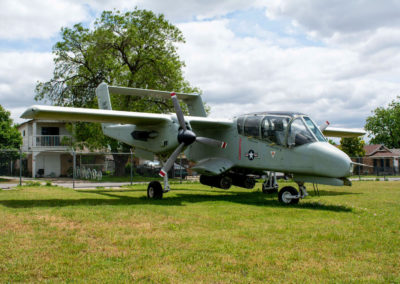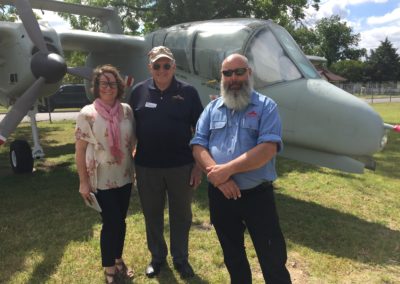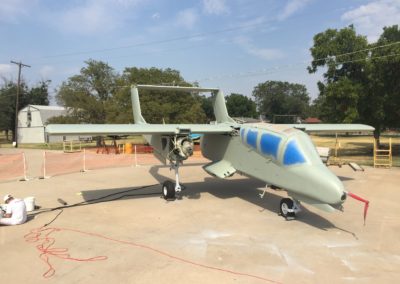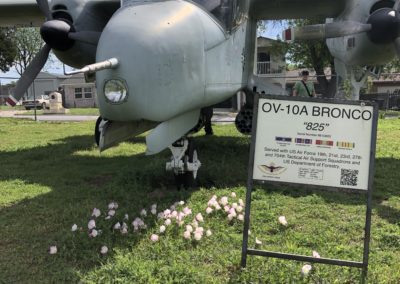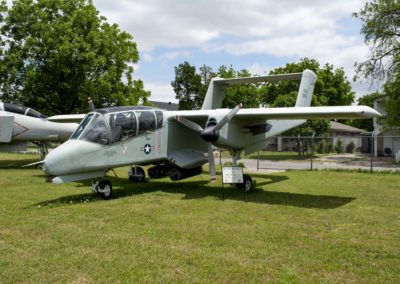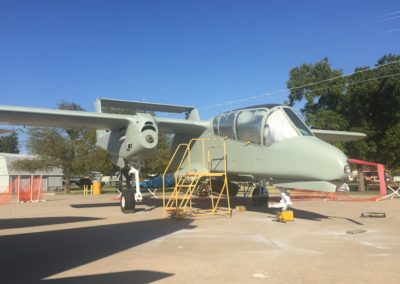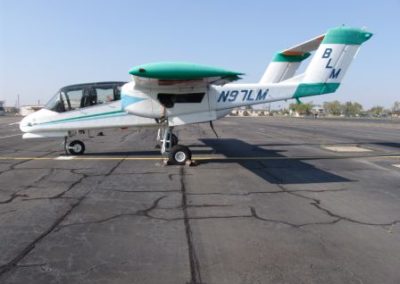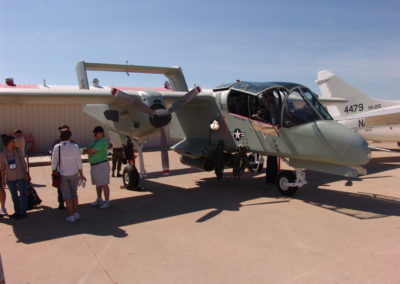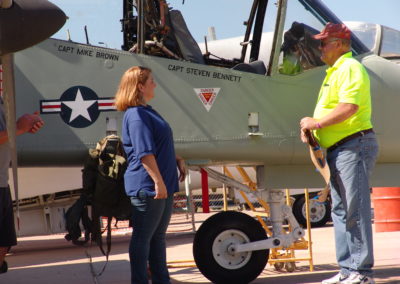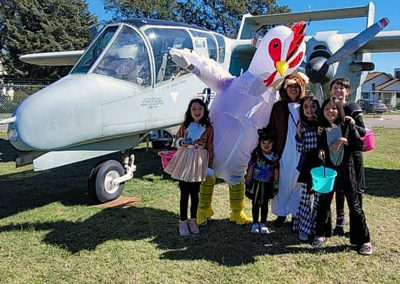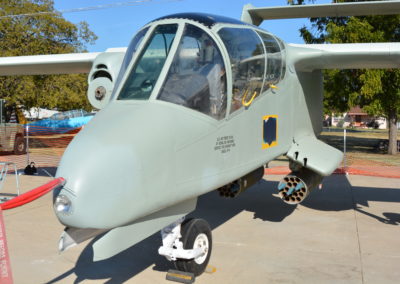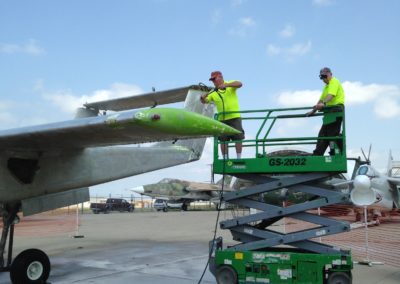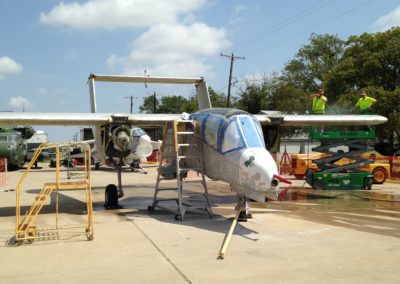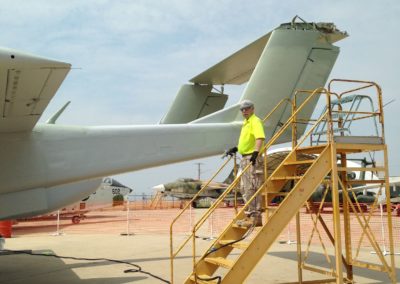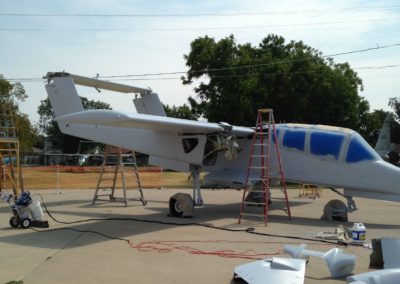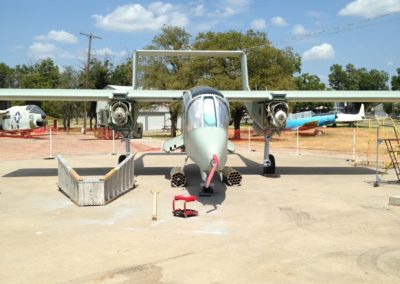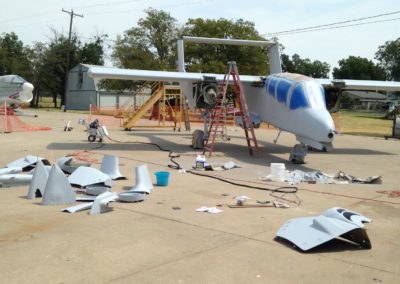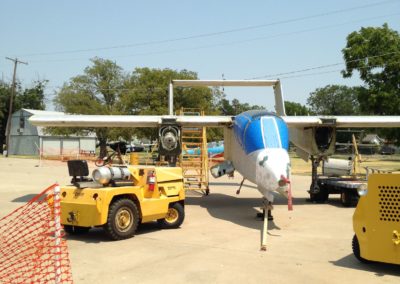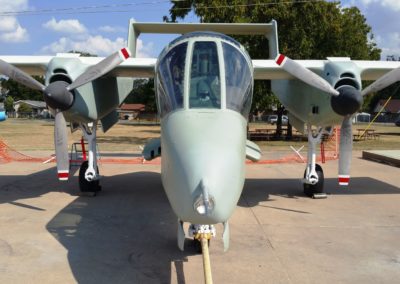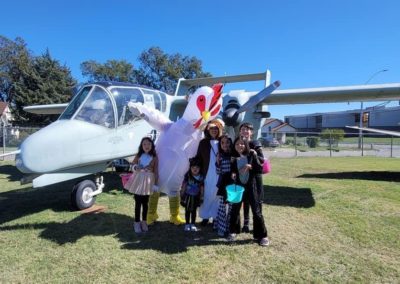OV-10A Air Force Bronco
The OV-10A is a twin-turboprop short takeoff and landing aircraft conceived by the U.S. Marine Corps and developed under a U.S. Air Force, Navy and Marine Corps tri-service program for a Light Armed Reconnaissance Aircraft (LARA).
Warbird Overview
The OV-10A is a twin-turboprop short takeoff and landing aircraft conceived by the U.S. Marine Corps and developed under a U.S. Air Force, Navy and Marine Corps tri-service program for a Light Armed Reconnaissance Aircraft (LARA). The North American Rockwell aircraft first flew on July 16, 1965. The first production OV-10A was ordered in 1966, and its initial flight took place in August 1967.
ABOUT THE OV-10A BRONCO (AIR FORCE)
This is one of three OV-10s at FWAM.
The OV-10A is a twin-turboprop short takeoff and landing aircraft conceived by the U.S. Marine Corps and developed under a U.S. Air Force, Navy, and Marine Corps tri-service program for a Light Armed Reconnaissance Aircraft (LARA). The North American Rockwell aircraft first flew on July 16, 1965. The first production OV-10A was ordered in 1966, and its initial flight took place in August 1967.
The Bronco’s US military missions included observation, forward air control, helicopter escort, armed reconnaissance, gunfire spotting, utility, and limited ground attack. The USAF acquired the Bronco primarily as a forward air control (FAC) aircraft. Adding to its versatility is a rear fuselage compartment with a capacity of 3,200 pounds of cargo or five combat-equipped troops or two litter patients and a medical attendant.
Another unique unit operating OV-10s was the US Navy’s Light Attack Squadron FOUR, VAL-4, “Black Ponies.” The unit was unusual in that it was ground-based. They provided fixed-wing close air support for River Patrol Boats in the Mekong Delta area of Vietnam.
On July 6, 1968, the Marines first OV-10s arrived at Marble Mountain, Vietnam, and flew its first mission that day. The first Air Force OV-10s also arrived shortly thereafter. The nearly 300 aircraft were all produced at Air Force Plant Number 85 at Port Columbus Airport in Ohio. The last one was built in 1976.
The Air Force retired their last OV-10 in 1991, but the Marines continued to operate theirs until July 1994. Foreign governments and other US Government agencies – Bureau of Land Management, Bureau of Alcohol, Tobacco, and Firearms, and the California Department of Forestry and Fire (CDF) – continued to operate OV-10s.
Fact #1
The story of this aircraft is much like the Marine OV-10. It was built shortly after the Marine Bronco and was delivered to the Air Force in Nakhon Phanom, Royal Thailand Air Force Base (NKP), where it served as a FAC aircraft. After the Vietnam War, the aircraft served in Europe, Japan, and Arizona.
Fact #2
This aircraft was delivered to Sembach, Germany, and returned by being flown over the Atlantic Ocean. One of our docents, Garry Goff was part of that operation to the 704th Tactical Air Support Squadron.
Fact #3
Our Treasurer, Tom Kemp, flew this aircraft in combat in South East Asia.
Manufacturer: North American Aviation
Engines: Two Garrett-AiResearch T76 turboprops of 715 shaft horsepower each
Max. Speed: 281 mph
Cruising Speed: 223 mphRange1,240 miles
Service Ceiling: 26,000 feet
Wingspan: 40 feetLength41 feet, 7 inches
Height: 15 feet, 1 inches
Weight: 14,444 pounds maximum
Armament: Four M-60C 7.62mm machine guns in the fuselage, plus 3,600 pounds of external stores. Rack-mounted armament in the Vietnam War was usually seven-shot 2.75-inch rocket pods with white phosphorus marker rounds or high-explosive rockets, or 5-inch four-shot Zuni rocket pods. Bombs, air-delivered seismic sensors (ADSIDS), Mk-6 battlefield illumination flares, and other stores were carried as well.
This Rockwell OV-10A, Air Force (serial number 68-03825, c/n 321-15), was delivered to the USAF and arrived in Vietnam in 1973 to serve with the 23rd TASS (Tactical Air Support Squadron). It served in West Germany with the 601st TCW, 704th TASS (1978-1984), and Osan, South Korea, with the 19th TASS (1987-1989).
Following military service and 10,073 hours flight time, it flew with the U.S. Bureau of Land Management (BLM) as N646 (“City of Fairbanks”) from 1992 until 1997. BLM stopped flying this Bronco in 1997 and it was transferred to Mather, CA, California Department of Forestry (CDF), as a spare airframe, but was not flown (1998-2005). Following 11,164.7 hours of flight time, the GSA transferred this Bronco to the OV-10 Bronco Association in April 2005. Currently at OBA Fort Worth 11/20/05. The aircraft arrived at Fort Worth Aviation Museum from California in January 2006. Locally Broncos introduced laser guidance for bombing after development by Raytheon in Fort Worth. Also, the only OV-10 recipient of the Medal of Honor was posthumously awarded to a North Texas native USAF Capt. Steve Bennett while flying the Bronco in Vietnam.
Paint good, some cracking on tail booms. We will need to be stabilized but no large issue there. Another freshening up and wash to bring out paint shine. Another great cockpit for visitors viewing.
Note: Scheduling is always a moving target depending on weather and workload. All schedules are subject to changes.
Become a Member!
FLIGHT SIMULATOR
HOURS
Saturday: 9AM-2PM
Sunday: 11AM-3PM
